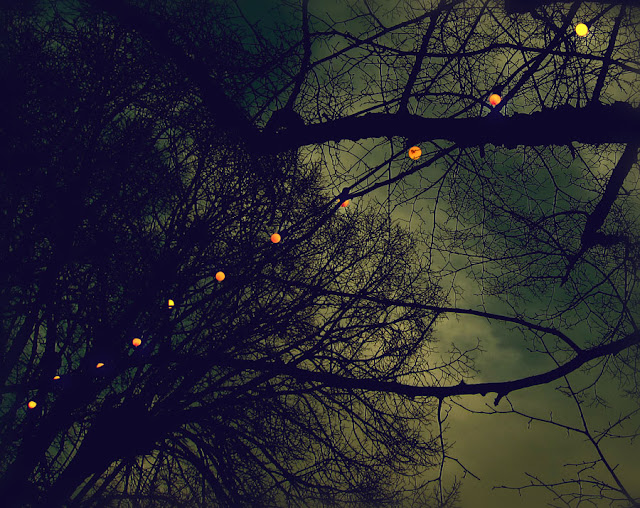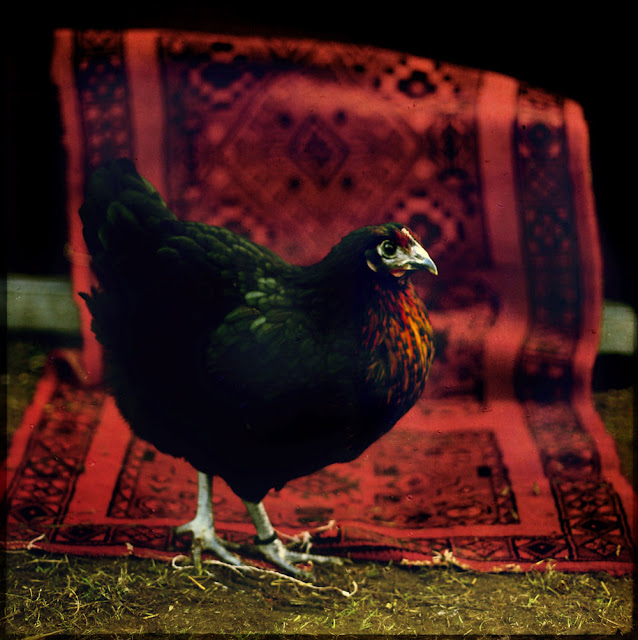 |
| Copper Dome - Tim Irving |
Monday, February 28, 2011
Copper Domed Roof
Friday, February 25, 2011
The Wellcome Image Awards
 |
| Foreleg of a male diving beetle - Spike Walker |
The fantastic image above by Spike Walker caught me out. When I first saw it I thought it was a detail from an impressionist painting.
Wednesday, February 23, 2011
Alexander McQueen at the Metropolitan Museum of Art
 |
| Dress, The Horn of Plenty, from the autumn/winter 2009 collection Photograph: Solve Sundsbo/The Metropolitan Museum of Art |
 |
| Dress from the autumn/winter 2010 collectionPhotograph: Solve Sundsbo/The Metropolitan Museum of Art |
Fox and Cubs Thatched Roof
 |
| Fox and Cubs - Tim Irving |
Tuesday, February 22, 2011
Nikon Prime Lenses on Canon Digital Cameras
 |
| Canon Eos 5D with Nikon 50mm f/1.2 - Tim Irving |
These lenses are sometimes described as standard, but believe me, they're not. I have been asked "What are the qualities of a Noctilux, when stopped down to f/8". The answer is I don't know, or care. I only use a fast lens wide open or stopped down one or two stops at the most. Wide open I like the narrow depth of focus, the bokeh, the low contrast and the softness, particularly the softness.
I've written before about the Nikon 50mm f/1.2 lens, and my liking for it. Until recently this lens has been parked permanetly on my Nikon F2, it's been a happy and fruitful union. I've spoken about how the lens has a unique look that I like, probably one of my favourite lenses of all time.
For about 40% of my work I use Canon full frame DSLR's, like the Eos 5D above. They're fast and very easy to use, but I've always found the current range of Canon lenses to be rather sterile, disappointing really. I've settled on the 50mm f/1.4 and the 85mm f/1.8 which are unremarkable but work well.
For some time I've toyed with the idea of putting other manufacturers lenses (read Nikon and Leica), onto one of my Canon camera bodies. Two weeks ago I took the plunge, I ordered the appropriate adapter from SRB, a very good, small precision engineering company who make adapters for everything. The SRB adapter is beautifully made and fitting it to the lens is simple matter, as is fitting the lens to the camera.
Looking through the viewfinder for the first time it's instantly apparent that the lens/body combination will take some getting used to. The camera works in the Av mode (aperture priority). You set the aperture and the camera sets the shutter speed, which is displayed in the viewfinder, so far, so good. You can also adjust the ISO and the exposure compensation for fine tuning.
In use this combination of camera and lens is like going back in time. For me it's like using the Exacta camera I had 30 years ago. Within 5 minutes, or 10 photographs, it's obvious that focusing this lens is guess work on the standard Canon screen. I ordered a split image focusing screen which arrived next day.
 |
| Drops of Scarlett - Eos 5D with Nikon 50mm f/1.2 - Tim Irving |
Overall I'm very happy with the Nikon/Eos combination, it works very well alongside my other methods. It could be easier, but nothing is perfect.
Friday, February 18, 2011
Buying a New Lens
 |
| Tree Lights - Tim Irving |
Johnny Marr is an extreme example, but some of us like to buy objects that make us happy. I am such a person and I'm very happy! Unfortunately, photographers who change cameras and lenses are somehow frowned upon by certain characters, their theme is "Stick to one camera and one prime lens". To these people I say, mind your own business! You wouldn't restrict a painter to one canvas size, or a guitarist to one guitar, it wouldn't make sense.
For me, changing cameras and lenses can improve my photography. It can inspire me and let me see subjects in a new way. It's all very well knowing your equipment inside out, but my favourite images are usually the result of a happy accident, and I'm not just talking about my photos.
The sign that I need a new piece of equipment is like an irritation that can't be ignored. It starts with an idea, then a Google search and over a few weeks it turns into a desire. Like a hungry dog, all I can focus on is the big juicy bone that gets bigger and jucier by the day. In my case it's a lens that becomes more important to me by the day. I used to try and ignore the irritation, but as I've become older (and wiser?), I see no point in suffering. So if the hunger is there after 2 weeks, I buy. This weekend I'm buying a new lens. I'm exited, it's going to be a big day out, involving catching a train and having lunch, all part of the experience and the pleasure. Using the new lens will follow a predictable pattern, a honymoon, where I initially feel clumsy but eventually, my confidence and technique improves with practice.
Have a great weekend and wish me luck.
Monday, February 14, 2011
Working With Chickens
 |
| The Nera - Tim Irving |
The job was not without its issues, but few jobs are.
Issue one was the cold. When I left my house to drive to the farm, the sun was shining, it was warm, too warm for a coat. When I arrived at the farm on the Cambridgeshire Fens the sun was still shining, but the wind was cold, very cold. Never mind, get the job done. Issue two was I didn't consider kneeling for an hour on damp grass. Issue three and by far the biggest issue was that the chickens didn't feel comfortable on carpet. They'll do anything to avoid walking on a nice rug. The common ploy used by the poultry was to keep to the edge of the carpet, stretching their necks to peck the corn.
I'm happy with the photograph of the Nera (Rhode Island Red hybrid), but I haven't finished the project, today was a trial run. On my next visit I'll take warm clothing, a groundsheet to lie on and, the secret of success, a bigger carpet!
Sunday, February 13, 2011
Old Carpet Face
 |
| Old Carpet - Tim Irving |
I've started work again, but I've noticed I'm looking for subdued colours to make the most of the soft northern European light. There will be no sun or sky in my photographs for the time being.
Thursday, February 10, 2011
A Dose of Flu
 |
| Untitled - Tim Irving |
On Monday I thought I'd caught a cold. On Tuesday, I was feeling better. On Wednesday I lay in bed, hot, cold, delirious. Today, I'm out of bed but with wobbly legs.
I'm fired up to take photographs and get some exercise. So after a brief recuperation, I'll be visiting the North Sea coast on Tuesday for a long walk and hopefully a few pictures.
Tuesday, February 8, 2011
The Negative Photographic Product Award
 |
| The GUGO Camera |
As far as industrial design goes, most new cameras are uninspiring, the majority dull, and a few down right ugly. So for this reason I've decided to create an award for products that I believe are outstanding and that in my opinion deserve a mention.
The idea for the award came about because of the handsome camera above, the GUGO. And it's the GUGO camera that received the first Negative Photographic Product Award, ever. It wins the category of "Best looking, unknown camera".
Feel free to submit your favourite cameras for next years awards.
Sunday, February 6, 2011
Milton Rogovin
'All my life I've focused on the poor. The rich ones have their own photographers."
I have to report that Milton Rogovin has died aged 101. He produced one of the great bodies of social documentary photography of the 20th century. A great photographer who's simple style was infused with respect.
I have to report that Milton Rogovin has died aged 101. He produced one of the great bodies of social documentary photography of the 20th century. A great photographer who's simple style was infused with respect.
Wednesday, February 2, 2011
Fairy Wings
The illustrations below are part of a project I've been working on (and off), for over 2 years. The idea for the illustrations came from looking at photographs of the Cottingly Fairies, which were taken in 1917. The bizarre outcome of the Cottingly Fairies saga was that after many scientific studies by photographic experts, and much money spent, it took until 1982 for someone to declare them fake.
My original idea was to dream up 30 species of fairies, and make a small booklet to identify them. I would claim them to be genuine and challenge experts to prove me wrong. The 30 species were invented and named in a few days. I could have invented more, including cross species, sub-species and rare sightings, but it was fortunate I didn't. Illustrating fairies is a life long job. After 2 years (part time), work, I've just finished my 8th wing, the Ice Fairy, below.
The illustrations are quite big, 72 inches high. The text is overlaid on acetate for re-positioning so on paper there is just the wing. I'm now wondering if they would sell on their own, sans text. Or, should I continue and publish the booklet.
My original idea was to dream up 30 species of fairies, and make a small booklet to identify them. I would claim them to be genuine and challenge experts to prove me wrong. The 30 species were invented and named in a few days. I could have invented more, including cross species, sub-species and rare sightings, but it was fortunate I didn't. Illustrating fairies is a life long job. After 2 years (part time), work, I've just finished my 8th wing, the Ice Fairy, below.
The illustrations are quite big, 72 inches high. The text is overlaid on acetate for re-positioning so on paper there is just the wing. I'm now wondering if they would sell on their own, sans text. Or, should I continue and publish the booklet.
 | ||
| Water Fairy - Tim Irving |
 |
| Air Fairy - Tim Irving |
 |
| Ice Fairy - Tim Irving |
Tuesday, February 1, 2011
Google Art Project
You know I'm always grumbling about the crowds in art galleries. Well Google have obviously read my blog, they agree with me, and decided enough is enough. The image above is from my screen. It's the newly launched Google Art Project and it's very impressive. From the comfort of your own home, you can visit some of the greatest art galleries in world. So far 17 galleries are taking part, but new galleries are to be added.
Google Art Project isn't a new idea. The Lourve has been on line since the early 90's. I was personally involved with a project called the National Arts Guide back in 1994, where 600 galleries in the UK could display examples of their collection. But these early attempts to display art were crude, and the quality poor. Google Art Project is very polished indeed.
Google Art Project isn't a new idea. The Lourve has been on line since the early 90's. I was personally involved with a project called the National Arts Guide back in 1994, where 600 galleries in the UK could display examples of their collection. But these early attempts to display art were crude, and the quality poor. Google Art Project is very polished indeed.
Subscribe to:
Posts (Atom)


